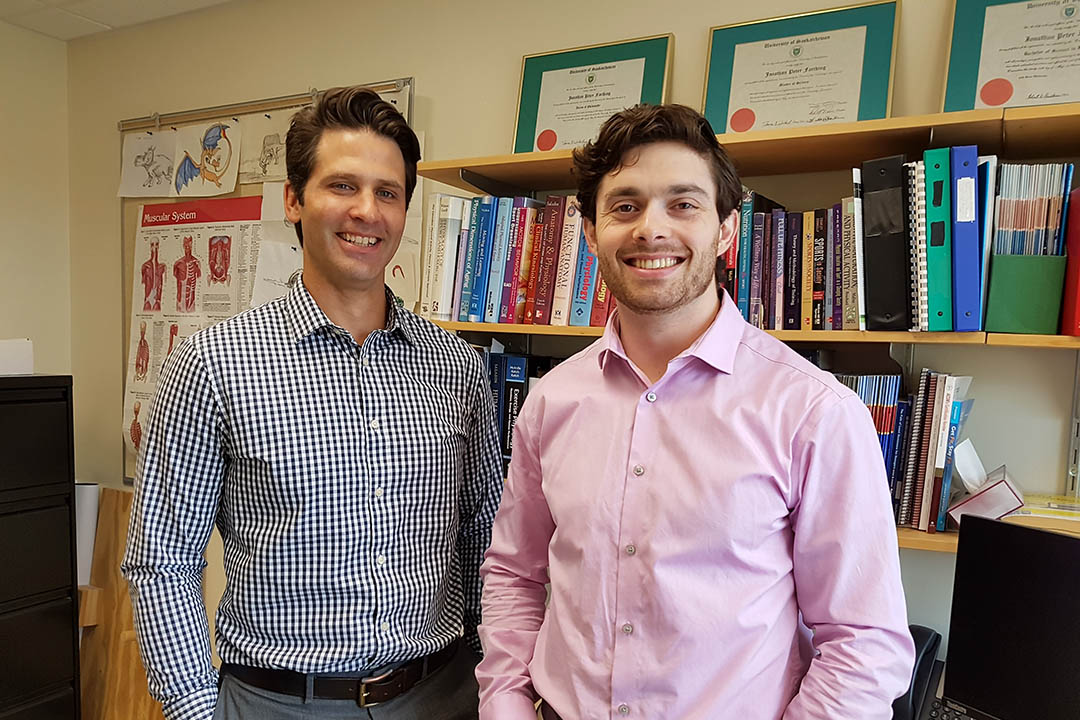
Exercise opposite side to keep casted limb strong
When you injure an arm, exercising the same healthy limb on the other side of the body may be key to maintaining strength and muscle size in the injured limb, a University of Saskatchewan study shows.
By Federica Giannelli“The strength preservation likely comes from a phenomenon related to how exercising one side of the body affects information exchange between the two sides the brain, and then influences the non-trained side of the body,” said Andrushko. This information exchange is well known from previous research, some of it by Farthing.
The students who did the “cross-education” training also preserved their muscle size, not just strength, compared to those who didn’t. Andrushko found the non-exercising group lost on average three per cent of muscle.
He is the first to study muscle size preservation by using a peripheral Quantitative Computed Tomography (pQCT) scanning, which offered a more in-depth picture of the entire forearm, unlike previous ultrasound-based studies.
The cause behind muscle size preservation is still a mystery, but the researchers think exercising may trigger a yet-unknown connection between the nervous system and a protein balance mechanism that helps maintain muscle size.
“We do not know much about the causes of muscle size preservation, so we need to dig deeper,” said Farthing. “This was an initial study on healthy, young people. There may be unknown factors at play when applying this to injured people, and the results could change.”
While this study was Andrushko’s master’s project, he is now working with Farthing to study the effects of “cross-education” on stroke patients. Because strokes often cause serious loss of muscular strength on one side of the body, Andrushko is interested to see how exercising the less affected side could benefit rehabilitation.
Farthing’s projects are funded by the federal agency NSERC, the Saskatchewan Health Research Foundation (SHRF) and the Royal University Hospital Foundation. Andrushko’s master’s project was also funded by the Canadian Institutes of Health Research (CIHR).
Federica Giannelli is a graduate student intern in the U of S research profile and impact unit.
This article first ran as part of the 2018 Young Innovators series, an initiative of the U of S Research Profile and Impact office in partnership with the Saskatoon StarPhoenix.

